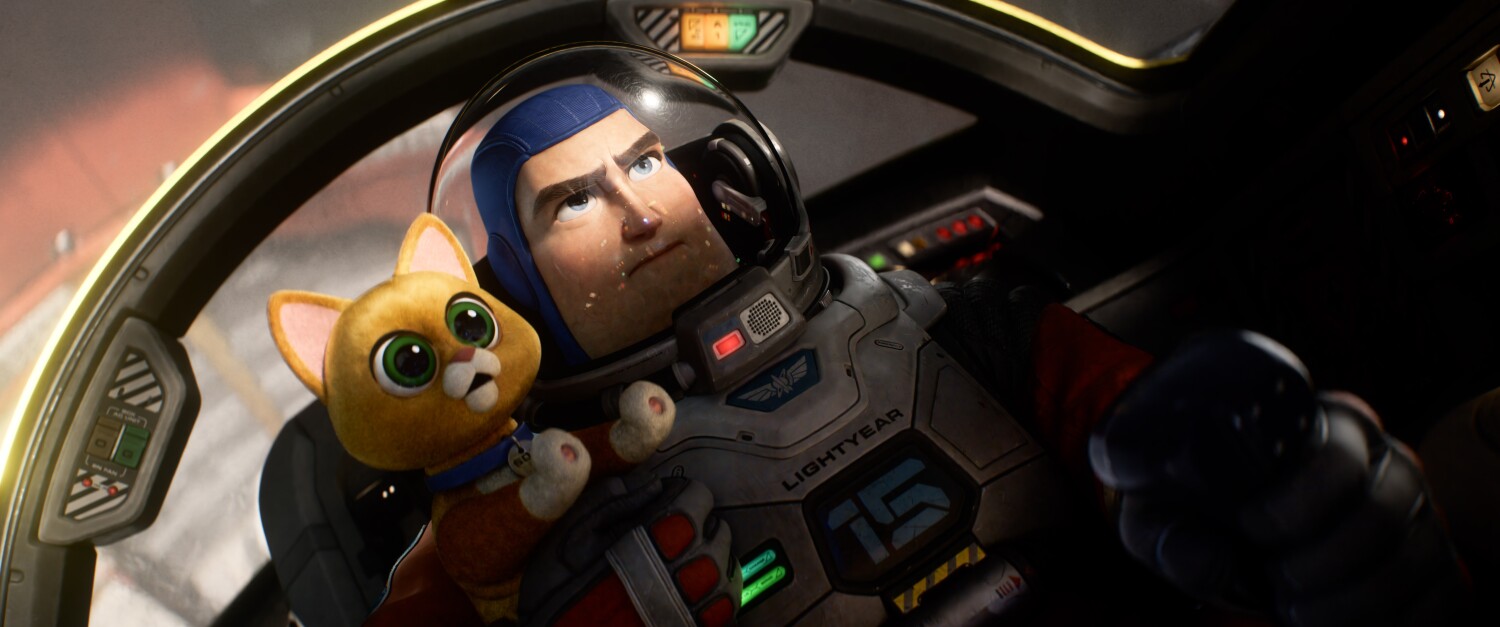
This story contains spoilers for “Lightyear” and is meant to be read after seeing the movie. If you’ve yet to see the film, consider reading the review instead.
Yes, “Lightyear” has multiple post-credits scenes.
As the film explains in its opening scrawl, “Lightyear,” which is now playing nationwide, was conceived as the movie that Andy from the “Toy Story” franchise saw as a child that made him want a Buzz Lightyear toy.
The movie follows Buzz Lightyear, the human Space Ranger, as he tries to atone for a mistake that has left him and his shipmates stranded on a mysterious planet far away from Earth. Blinded by the need to complete his mission, Buzz refuses to slow down enough to notice everything he is missing out on.
After traveling through time and space — and learning how to trust others — Buzz defeats Zurg, helps saves his new home and is tasked with leading a new team of Space Rangers. But not everything is over when the credits start to roll.
“Lightyear” features three after-credits scenes. The first two scenes serve as extensions of jokes set up during earlier parts of the film, and are similar to post-credits tags that have been featured on other Pixar films. The third scene, which arrives after all of the credits have been shown, is brief but more obviously teases that the story hasn’t ended between Buzz and Zurg. It turns out Zurg is not as dead as audiences were initially led to believe.
“I don’t think you’d want that to be the end of Zurg,” said director Angus MacLane about that final “Easter egg.” “You want the movie to be self-contained but allude to the fact that the adventure will continue. That’s really the ending for both the hero and the villain. Buzz wants to save the day with the group, and Zurg wants revenge.”
According to producer Galyn Susman, the scene revealing Zurg survived was not originally conceived of as post-credits tag. The element was at one point part of the film’s main story.
But then they realized “everybody’s going to [ask] ‘are you making a sequel?’ and we just couldn’t deal with that thought right then and there,” said Susman. “It was like, we’ve got to get rid of this because we’re not going to go screaming ‘sequel!’ in the middle of our movie.”
“So we just kept pushing it further back and further back,” added MacLane.
“Until it left me movie,” Susman continued.
“Until most people will not see it,” MacLane joked.
MacLane also acknowledged the practical reasons of including post-credits scenes: “People can’t handle looking at the amount of people it actually takes to make a movie.” Plus, in the age of Disney+, post-credits scenes will keep the streamer from shrinking the screen during the credits in order to suggest the next thing the viewer should watch. At least until after the bonus scenes are shown.
When asked whether it was unusual for a movie Andy saw in 1995 to include post-credits scenes, MacLane admitted, “We were not super strict with the conventions of the movies of the era.
“I imagine [this movie] was made in 1986 and Andy watched it on tape,” added MacLane. “And ’95 was when he got the toy because it was based on a TV show that was out around then that he was excited to see because it was an offshoot of a popular sci-fi movie.”
